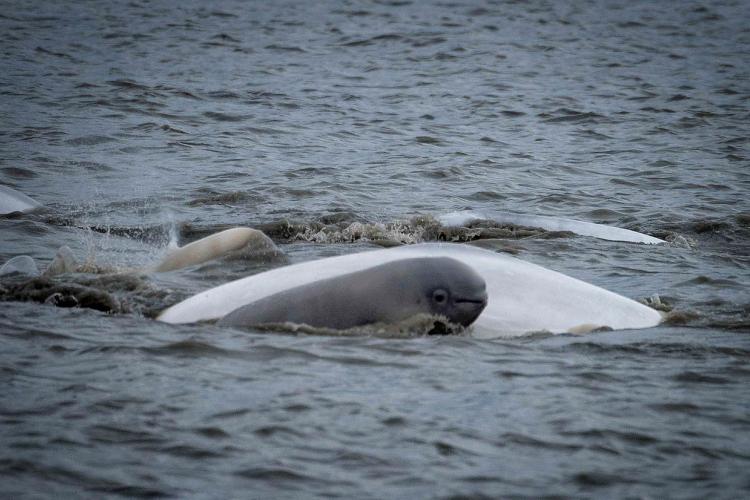A satellite tagging project was conducted from 1999 through 2003, as part of a multi-year study of summer, fall, winter, and spring movements of beluga whales in Cook Inlet. This project was a cooperative effort led by the Alaska Fisheries Science Center's Marine Mammal Laboratory and the Alaska Regional Office, collaborating with Alaska Native subsistence hunters, the Northwest Fisheries Science Center, Southwest Fisheries Science Center, Dynacare Laboratories Consumer’s Medical Lab, SeaWorld San Antonio, Alaska Veterinary Pathology Services, Joint-Base Elmendorf-Richardson, University of Alaska-Fairbanks, and the Alaska SeaLife Center.
Each beluga was tagged with a satellite-linked transmitter that recorded location data. Most tags also included a time and depth recorder which records average dive depths, dive intervals, and time at depth, while other tags recorded temperature. These data were reported to a System ARGOS receiver on a NOAA earth observation satellite passing overhead several times a day. Location of the whale is calculated from the Doppler shift in the uplink signal. The detailed position information from this study allowed biologists to follow the movements of tagged whales from their summer feeding areas to habitats occupied during fall, winter, and spring.
What we learned from these whales will help the National Marine Fisheries Service and several Alaska Native organizations in the Cook Inlet region understand the movement patterns of these animals, as well as their surfacing and diving behavior. These data were important to identifying the critical habitat areas that these endangered whales depend on given all tagged whales remained within Cook Inlet.
Health assessments conducted during this study included collection of blood serum, skin and blubber, and mucus. Skin samples provided genetic information and are used to identify individual whales and the stock that they came from. The blubber was analyzed to determine the whale's diet and contaminant loads. The blood yielded information on the general health and condition of the whale, as well as specific information on hormone levels.

